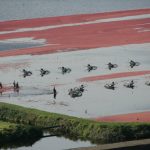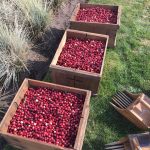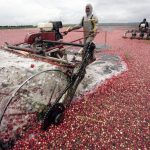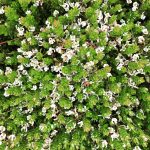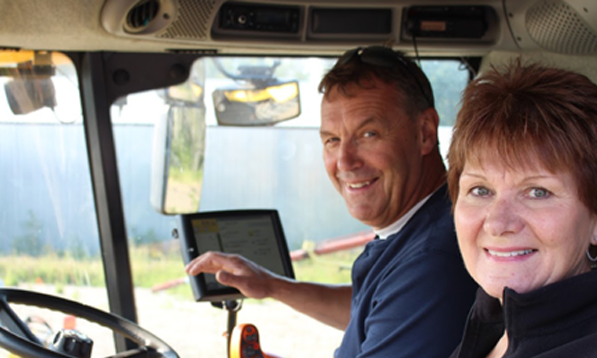
BC’s Golden Crop: How Canola Promotes Sustainable Farming Practices
October 3, 2018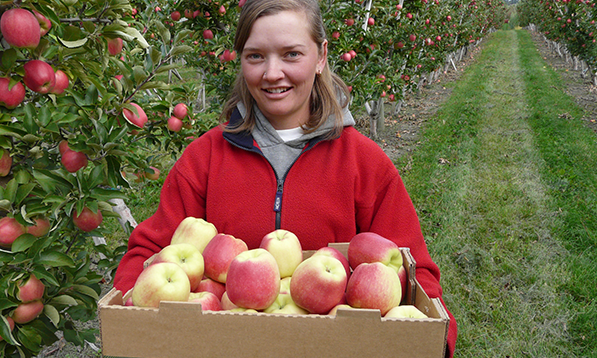
Home-grown goodness: Ambrosia producer Madeleine van Roechoudt talks farming, family, and how to enjoy the best apples in BC
November 30, 2018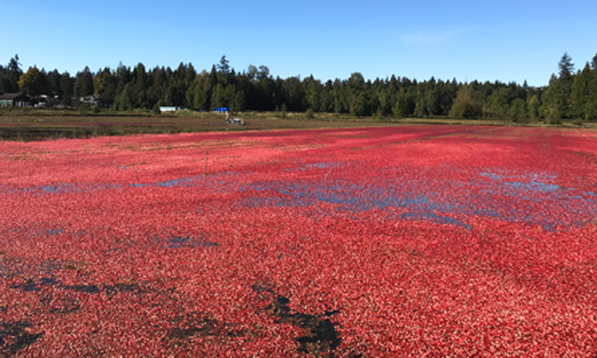
It’s an astonishing seasonal sight: every fall, BC’s cranberry fields are flooded for harvest, turning the low-lying fields a breathtaking shade of crimson. Cranberries are one of BC’s largest berry crops, and the 75 growers in the lower Fraser Valley and Vancouver Island produce more than 100 million pounds of cranberries annually. One of the very few commercially-grown fruits that are native to North America (others include Concord grapes and blueberries), cranberries are a ruby-red treat that you probably associate strongly with holiday dishes, sweet drinks, or as a perky salad topper. But did you know that the history of cranberries in BC stretches back to the end of the last ice age?
Retreating ice sheets left bogs where wild cranberries first flourished, and they were used by Coast Salish peoples for food, dyes and medicine. During the 1800’s, cranberries became a popular trading commodity at Fort Langley: in fact, records show that in the 1850’s, cranberries were considered more valuable than salmon. Part of their value came from what a perfect portable food dried cranberries are – their high Vitamin C content made them an effective (and tasty) way for West Coast sailors to combat scurvy.
Despite their seafaring past, it might surprise you to learn that cranberries don’t actually grow in the water (though it’s easy to assume that they do from seeing the wet harvest.) Instead, modern commercially-grown cranberries thrive on low vines on beds layered with sand, peat, gravel and clay. When the fields are flooded at the end of the growing season, beating machines help loosen the fruit so that ripe cranberries can float free to the surface, making it easy to harvest them. Cranberries that are wet-harvested end up in juices, dried cranberries and other products. But when you see fresh cranberries at the farmer’s market or in your local supermarket, you’re looking at berries that have been dry-harvested — that is, painstakingly combed from the vines using a mechanical picker (it looks a bit like a lawn mower) and sorted for sale. Cranberry harvest season runs from September to October, and that’s when you’ll find bags of fresh berries in the produce sections of BC’s grocery stores.
Cranberries are one of BC’s largest berry crops, and the 75 growers in the lower Fraser Valley and Vancouver Island produce more than 100 million pounds of cranberries annually.
What’s a year-round way to support BC cranberry growers? Here’s another surprise: buy Ocean Spray products. Ocean Spray is farmer-owned, and 90% of BC’s farmers belong to this cooperative — so when it’s not harvest season, you’ll see BC’s cranberry harvest transformed on your shelves as juices, dried, canned and frozen products.
If your cranberry experience has been mainly limited to holiday sauces, it’s time to branch out! Try cranberry crusted salmon cakes, toasted coconut cranberry energy bites or cranberry-orange compote (your morning bowl of oatmeal will thank you). Or, join us on our Facebook and Instagram pages to find more recipes and ideas.
